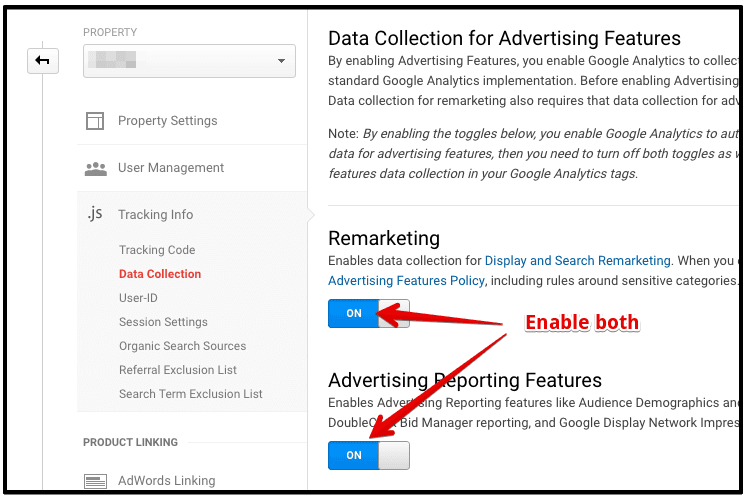Utilizing Remarketing in Google Analytics: A Comprehensive Guide
Taking advantage of remarketing in Google Analytics uses services a critical side in connecting to possible consumers. The capacity to target people that have actually currently engaged with your web site provides a special chance for tailored marketing initiatives. By understanding just how to craft target market checklists and release them successfully, companies can substantially improve their conversion prices. Nevertheless, the ins and outs of establishing and maximizing remarketing projects require an extensive understanding of audience division and performance analysis. This guide will certainly clarify the crucial steps associated with using the complete capacity of remarketing in Google Analytics, resulting in improved advertising and marketing outcomes.
Understanding Remarketing in Google Analytics
Remarketing in Google Analytics permits businesses to tactically target users who have actually previously interacted with their internet site or mobile application. By leveraging data from Google Analytics, organizations can develop customized remarketing lists based upon user actions, such as web pages seen, actions taken, or particular objectives accomplished. This powerful tool enables services to re-engage with customers who have actually shown interest in their solutions or products, inevitably boosting the possibility of conversion.
Comprehending the various sorts of remarketing approaches is important for an effective project - What Is “Remarketing” In Google Analytics?. Google Analytics supplies various alternatives, including conventional remarketing, vibrant remarketing, and remarketing lists for search ads (RLSA) Each kind offers an unique function and can be customized to fulfill specific marketing objectives
Additionally, examining the efficiency of remarketing projects is necessary for enhancing results. Google Analytics provides important insights into the efficiency of various remarketing methods, permitting services to make data-driven choices and improve their targeting approach. By constantly changing and keeping an eye on remarketing initiatives based upon analytics information, organizations can make the most of ROI and drive success in their advertising efforts.
Establishing Up Remarketing Campaigns

After setting up audience lists, the next step is to connect Google Analytics with Google Advertisements. By linking these two platforms, organizations can flawlessly move audience checklists from Google Analytics to Google Ads for remarketing purposes. This integration permits for even more accurate targeting and better campaign performance.
As soon as the accounts are linked, businesses can create remarketing campaigns in Google Advertisements making use of the target market notes previously specified in Google Analytics. These projects can be personalized with specific advertisement creatives, messaging, and bidding approaches to successfully re-engage with past site visitors and drive conversions. By complying these details with these actions, businesses can utilize the power of remarketing to enhance their advertising and marketing efforts and raise ROI.
Making Use Of Audience Division Techniques

Predefined sections in Google Analytics enable you to quickly evaluate typical target market classifications like brand-new users, returning customers, or customers that completed a certain goal on your web site. Personalized segments, on the various other hand, enable you to produce special sectors based on specific requirements that are crucial to your organization objectives. Dynamic remarketing listings immediately change based upon user actions, revealing tailored advertisements to customers that have actually engaged with your website specifically methods.
Studying Remarketing Efficiency Metrics
Upon reviewing the efficiency of remarketing projects in Google Analytics, the evaluation of crucial performance metrics provides valuable understandings into audience involvement and conversion prices. By delving into metrics such as click-through rates (CTR), conversion rates, expense per acquisition (CERTIFIED PUBLIC ACCOUNTANT), and return on advertisement spend (ROAS), marketing professionals can gauge the success of their remarketing initiatives. Assessing these metrics allows marketing professionals to optimize campaigns, improve audience targeting, and designate budgets efficiently to enhance total remarketing efficiency.
Enhancing Remarketing Approaches
When refining remarketing techniques in Google Analytics, concentrating on target market segmentation is critical for achieving project success. By splitting your audience right into specific sectors based on their habits, demographics, or passions, you can tailor your advertisements better to every team. This targeted approach enhances the probability of engaging customers who have actually already shown rate of interest in your product and services, leading to higher conversion rates.
Another crucial aspect of enhancing remarketing techniques is continuously testing and refining your projects (What Is “Remarketing” In Google Analytics?). A/B screening various advertisement creatives, messaging, or offers can aid you determine what reverberates best with your target market and drives one of the most conversions. By evaluating the performance of these examinations in Google Analytics, you can make data-driven decisions to enhance your remarketing initiatives better
In addition, leveraging vibrant remarketing can dramatically improve your campaign results. This feature enables you to show customized advertisements to users based on their previous interactions with your web site, showcasing service or products they have actually previously seen. By supplying tailored content to users based on their behaviors and rate of interests, vibrant remarketing can aid increase engagement and drive conversions.
Verdict
To conclude, taking advantage of remarketing in Google Analytics is a strategic method to target users who have actually formerly involved with a site. By developing tailored audience checklists and using target my site market segmentation methods, companies can optimize remarketing campaigns for enhanced conversion rates. Analyzing efficiency metrics and constantly enhancing approaches are vital for maximizing the performance of remarketing efforts.
Google Analytics offers numerous choices, consisting of conventional remarketing, dynamic remarketing, and remarketing lists for search advertisements (RLSA)After setting up audience listings, the following step is to connect Google Analytics with Google Ads. By connecting these read 2 platforms, businesses can flawlessly transfer target market checklists from Google Analytics to Google Advertisements for remarketing functions.Once the accounts are linked, companies can create remarketing projects in Google Ads making use of the audience lists previously specified in Google Analytics.When refining remarketing strategies in Google Analytics, concentrating on audience division is vital for achieving project success.